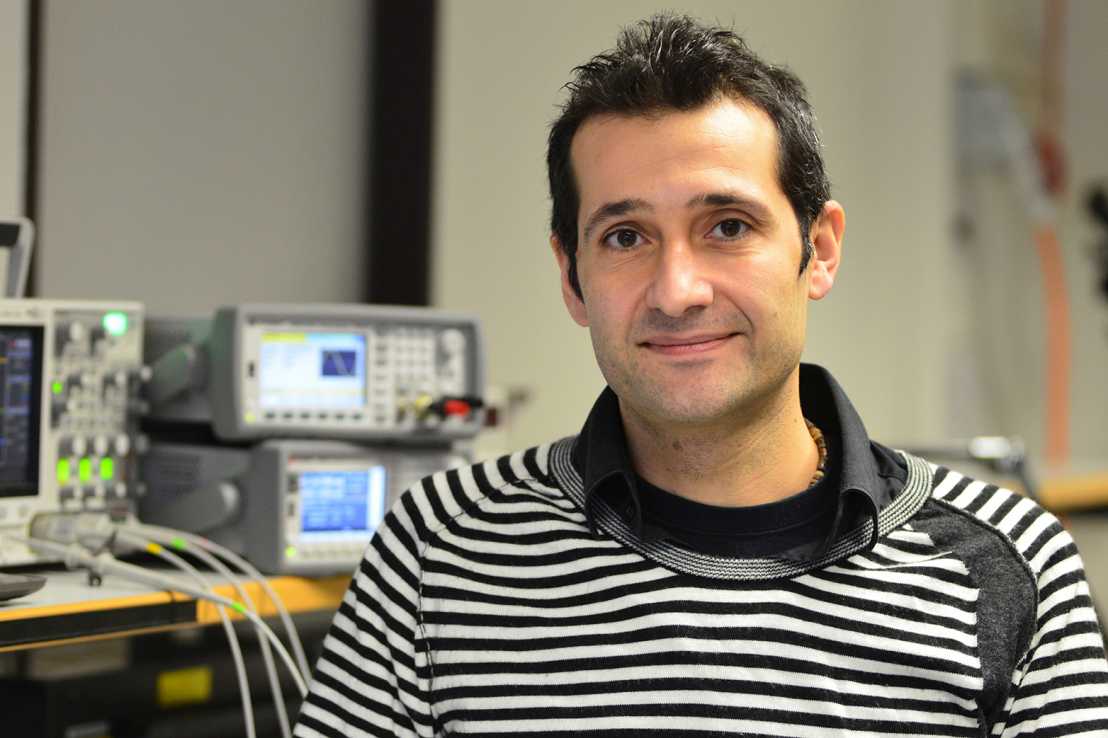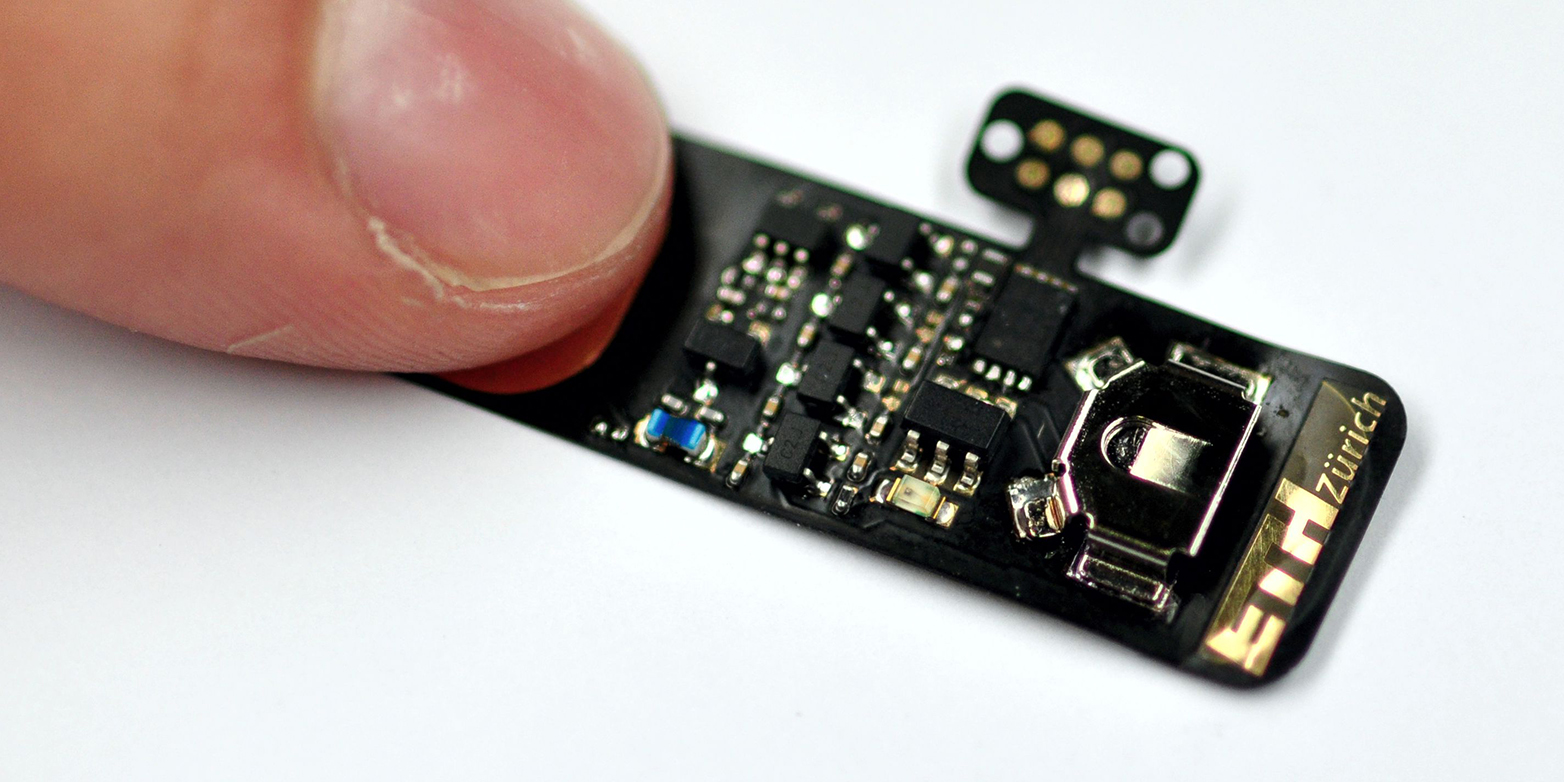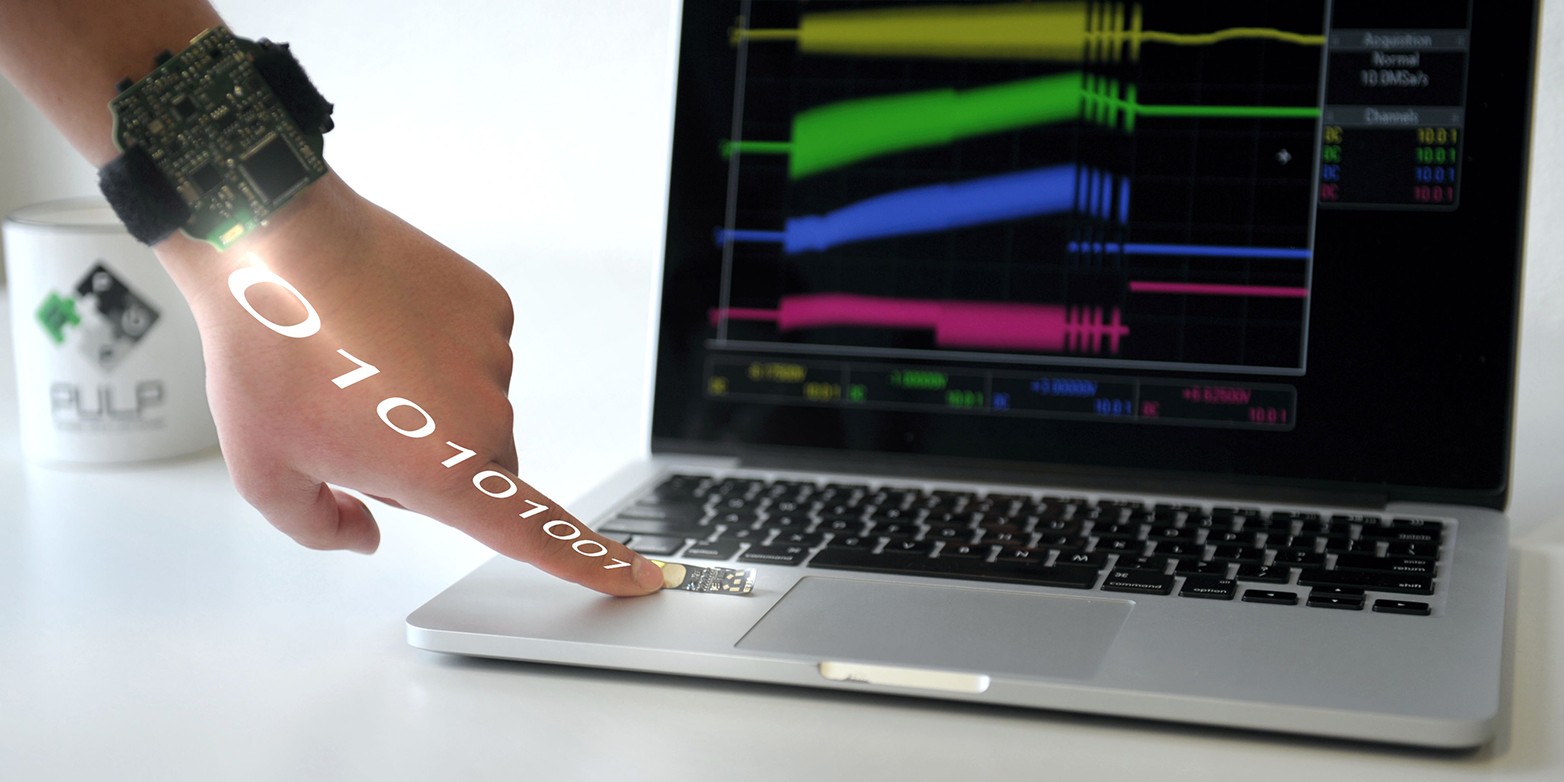A receiver for touch communication
Battery lifetime is an important issue in wearable devices. Ideally, they should always be ready to receive control signals without consuming a lot of power. Researchers at ETH Zurich have now developed a zero-power receiver for touch communication that harvests its energy directly from the signal.
Having electronic gadgets always ready to function at our command comes at a cost. According to some estimates, the power consumption of TV sets, DVD players, washing machines and other appliances in standby mode accounts for up to a quarter of the total electric energy used in an average household. While that is certainly a deplorable waste, the problem becomes even more crucial for battery-operated devices, especially the new generation belonging to the “Internet of Things”, and wearable devices such as fitness trackers or health monitors.
We want them to be constantly ready to receive input, but that means that they will continuously consume power, and batteries will drain fast. Also, radio-transmitted control signals cause problems regarding privacy and security. Michele Magno, a researcher with the Department of Information Technology and Electrical Engineering at ETH Zurich, has now found a clever way to address these issues.
Inspiration from Disney

“The trick lies in harvesting the necessary energy to receive a wake-up command directly from the transmitter through a touch”, explains Magno, who has been working on wake-up radio and energy harvesting technologies for many years. The idea for the new device originated from a chance encounter with researchers at the Disney Research lab in Zurich, who were interested in a touch-activated switch to implant into their toys. “They had an approach involving a receiver that would drain the batteries in a few hours, so in the end nothing came of that collaboration”, Magno says, but adds: “Still, my curiosity was piqued, and I really believed that the receiver could only be successful if it needed zero power. So, I started working on a prototype of the device I had in mind in my spare time, and later with the help of my master’s students Philipp Mayer and Raphael Strebel.”
Energy harvesting by “touch”
In the meantime, Magno’s idea has been submitted as a patent to the European Patent Office. Its principle is simple but challenging: the receiver, which does not have its own battery, captures signals on an electrode when it is “touched” by a human body. In order to get the receiver to wake up, before sending the actual command signal – a modulated electromagnetic wave at a frequency of a few Megahertz - the transmitter adds a “preamble” lasting a few milliseconds that doesn’t contain information. The energy absorbed by the receiver during that time is stored in a capacitor, which acts as a power source for receiving and decoding the actual control signal that follows. Other power-hungry devices in sleep mode can then be woken up by the receiver provided that the correct identification was received.
“In this way, we have a true zero-power receiver that can be used in a multitude of ways”, Magno explains, “such as touch sensors on your car that recognize you and open the doors for you”. This could be much safer than current radio-wave based technologies like RFID, which broadcast their signals over a distance and can, therefore, be hacked. Another interesting area is intra-body communication, in which wearable devices placed, for example, on both arms of a person, communicate with each other, or handshake information exchange between two users. Magno and his colleagues have shown that their prototype receiver has an on-body range of more than 1.7 meters, allowing communication between the wearer’s wrist and any other part of their body.
Ideal conditions at ETH
When Michele Magno speaks about his latest work, his enthusiasm is palpable, and he has ambitious plans for the future. With the help of the ETH transfer office he plans to create start-up companies that will develop his prototype into commercial devices for applications ranging from touch communication to monitoring trains. To get to the point where he is now – involved in around ten different research projects with more than a dozen PhD and master’s students as well as post-docs – he has come a long way from his alma mater in Bologna, where he obtained his PhD in 2010.
After a brief stint at ETH Zurich during his doctoral studies, he worked as a postdoctoral researcher in Ireland and France for a few years, eventually turning down job offers as assistant professor in favour of a post-doc position at ETH in the group of Luca Benini at the Integrated Systems Laboratory (IIS), which recently turned into a permanent position. The rationale for that choice was simple, he says: “What I can do in my current position at ETH, I couldn’t do as a professor anywhere else in Europe – the conditions here are simply ideal.”
Still, his ties with the University of Bologna are strong, which is also reflected in his position as a Research Fellow there, supervising a group of students who very successfully participate in innovation competitions sponsored by technology companies. When he isn’t busy in the lab inventing new devices, he spends time with his family: his French wife, whom he met in Ireland, and his young twin daughters. And who knows, maybe one day their toys will contain the zero-power receivers that daddy invented.


